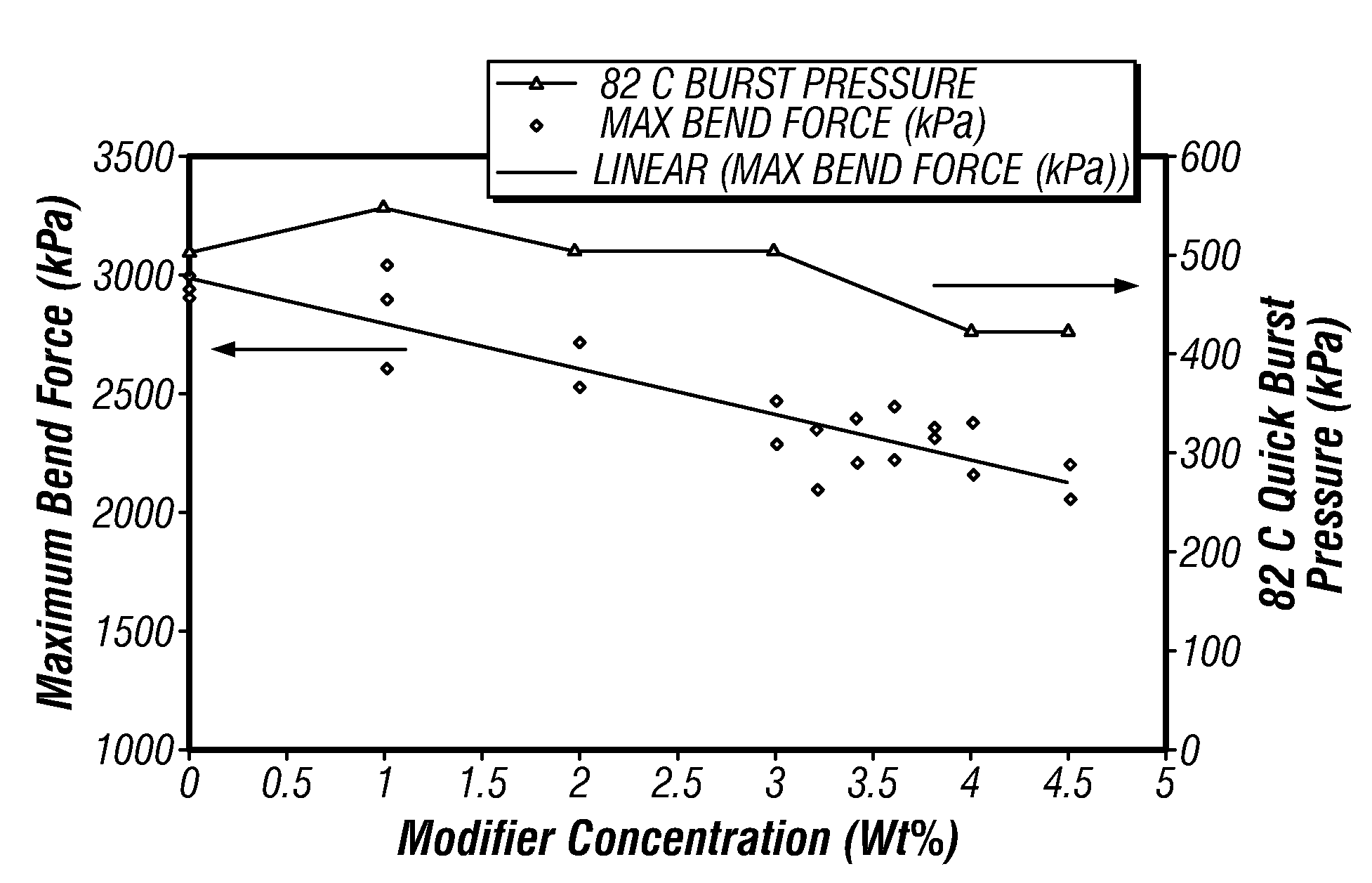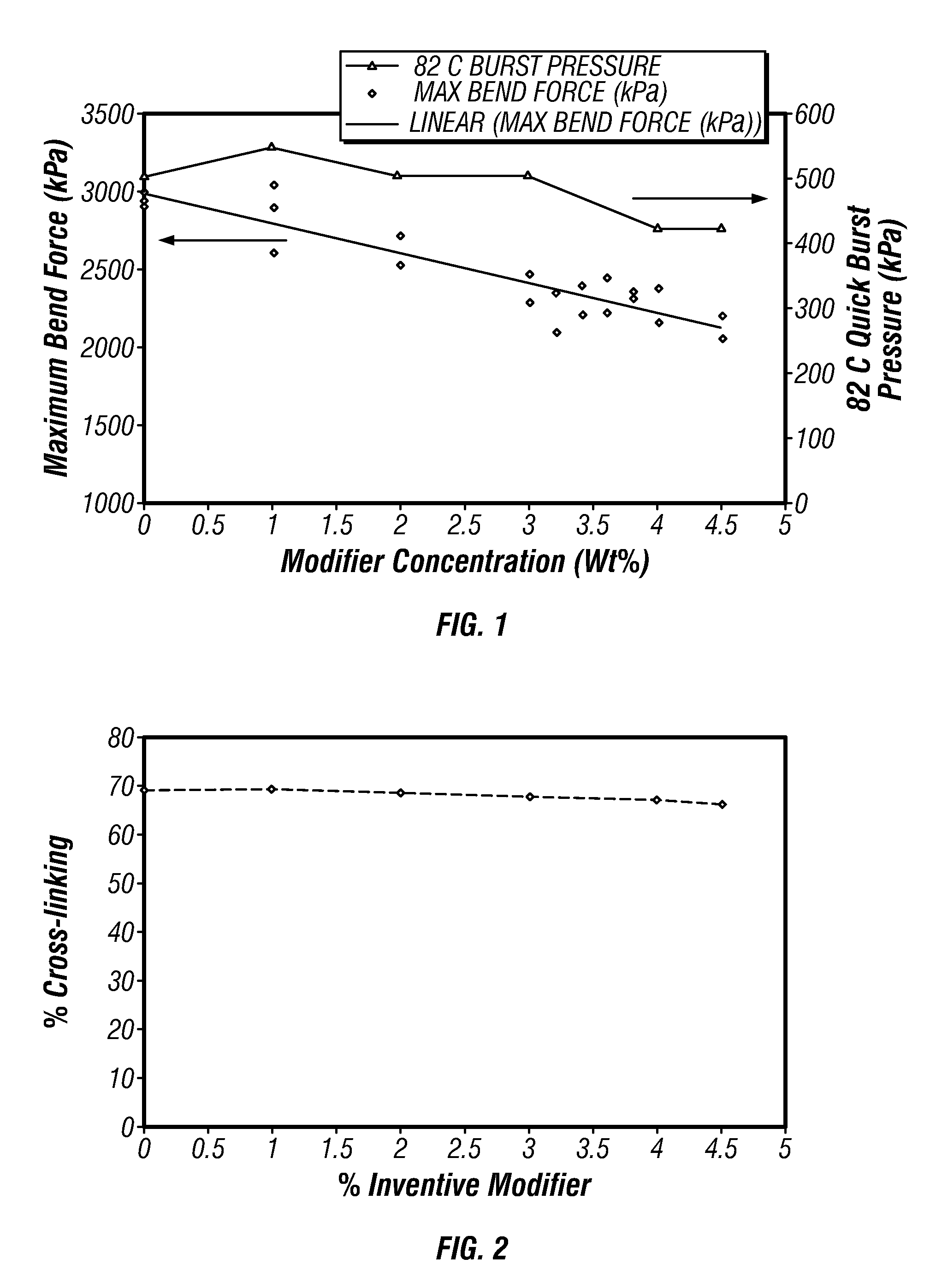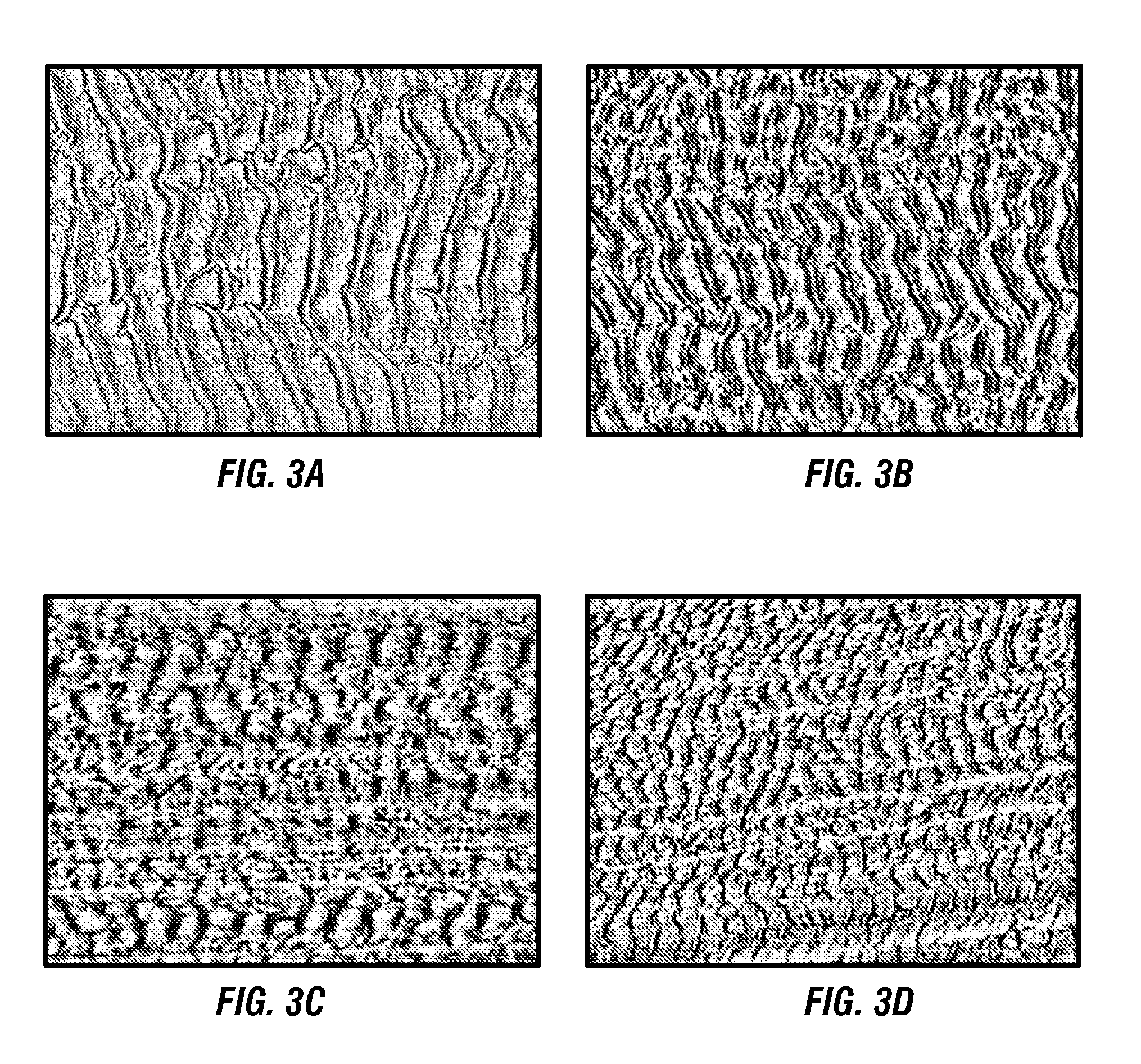Crosslinked polyethylene articles and processes to produce same
a technology of crosslinked polyethylene and process, applied in the field of plastic materials, can solve problems such as not reducing cure efficiency, and achieve the effects of reducing cure efficiency, excellent property modification over time, and high permanence and compatibility in pex
- Summary
- Abstract
- Description
- Claims
- Application Information
AI Technical Summary
Benefits of technology
Problems solved by technology
Method used
Image
Examples
examples
[0237]Trials using an NFP modifier were performed using commercial crosslinked polyethylene (PEX) equipment modified for injection of the NFP into the mix chamber of an INOEX gravimetric blender. Pipes of nominal 1.27 cm diameter (0.5 in.) and 1.90 cm (¾-in.) were made for evaluation. The process was allowed to stabilize at steady state before pipe samples were collected. In general, lower drive amp readings were present on the extruder as the NFP loadings were increased. This showed that the viscosity changes translate into reduced energy consumption and / or improved throughput rates at the same amperage loads. In general, the results also showed that the NFP as described herein did not interfere with the crosslinking of the PEX base resins, or with the antioxidant package in the pipe. Burst testing also showed that samples of the NFP-modified PEX passed with burst pressure well above the minimum requirements. In fact, even the samples with 5 wt % loading had burst test results comp...
examples 1-4
Tensile Properties in Piping and Tubing Applications
[0246]In examples 1-4 the PEX material was a hard, high-density plastic used in piping applications. Modifiers are often used to improve the flexibility of piping but when conventional, high Mw polymer modifiers such as plastomers are used to improve the flexibility, it is generally found that all the tensile properties are reduced significantly resulting in a weaker pipe. When typical fluid modifiers are used to modify PEX, it is generally found that the cure efficiency is reduced, and as a result the strength and toughness are reduced as well.
[0247]Surprisingly, it has been found that PEX with the inventive modifiers display significant reduction in flexural modulus (improvement in flexibility) but a much lesser reduction in tensile strength and burst strength (a measure of toughness). This allows one to construct high strength, durable pipe with excellent flexibility. In addition, the desired properties obtained can be maintaine...
examples 5-8
[0250]Table 6 suggests that this effect is also applicable to systems crosslinked using e-beam. Example 5 showed a 31% increase in flexibility and only a 20% loss in strength as reflected in both the stress at yield and the burst test.
[0251]Table 6 also shows how this effect is applicable to other host polyethylenes with a variety of properties that include a very high Mw PE (Example 7) and a very high density PE (Example 8). The high Mw (low MI) example showed a modest improvement in flexibility despite the slightly higher density with the addition of the inventive modifier while the burst strength remains almost unaffected. The very high density sample displayed very little change in bend strength (flexibility) and stress at yield, but showed modest improvement in high temperature burst strength and significant improvement in room temperature burst strength. With this knowledge the skilled artisan can design a compound with the desired tensile properties through the judicious choi...
PUM
| Property | Measurement | Unit |
|---|---|---|
| Temperature | aaaaa | aaaaa |
| Temperature | aaaaa | aaaaa |
| Temperature | aaaaa | aaaaa |
Abstract
Description
Claims
Application Information
 Login to View More
Login to View More - R&D
- Intellectual Property
- Life Sciences
- Materials
- Tech Scout
- Unparalleled Data Quality
- Higher Quality Content
- 60% Fewer Hallucinations
Browse by: Latest US Patents, China's latest patents, Technical Efficacy Thesaurus, Application Domain, Technology Topic, Popular Technical Reports.
© 2025 PatSnap. All rights reserved.Legal|Privacy policy|Modern Slavery Act Transparency Statement|Sitemap|About US| Contact US: help@patsnap.com



